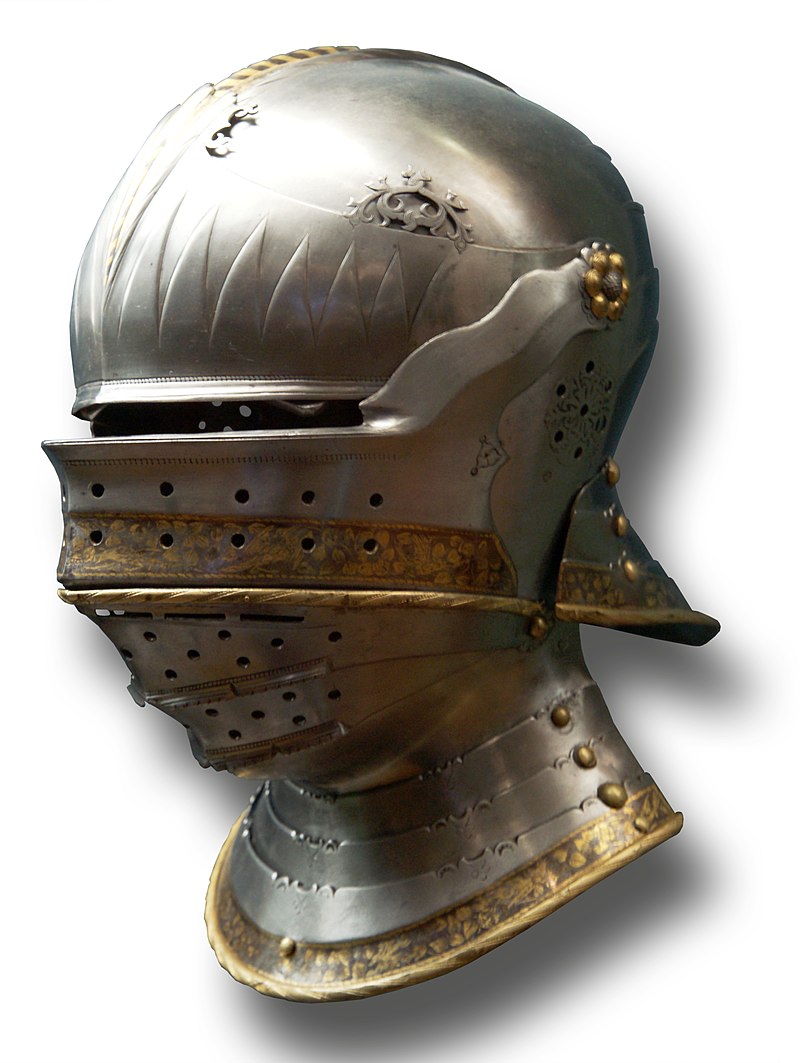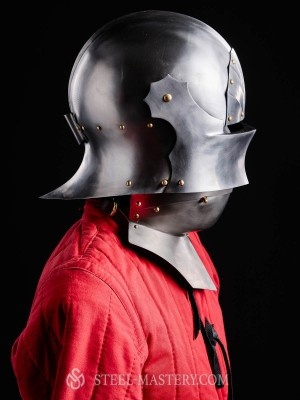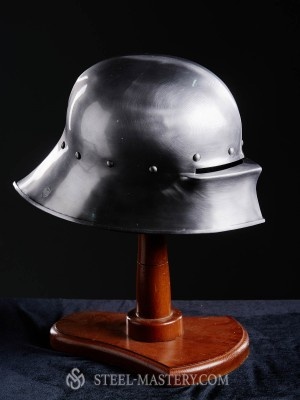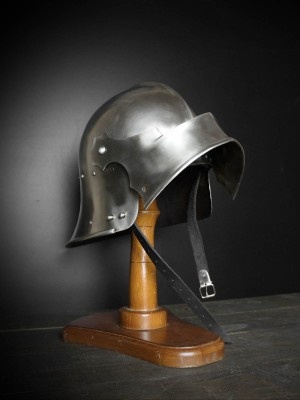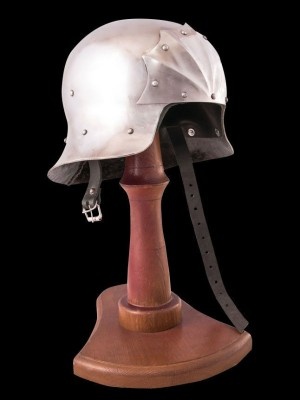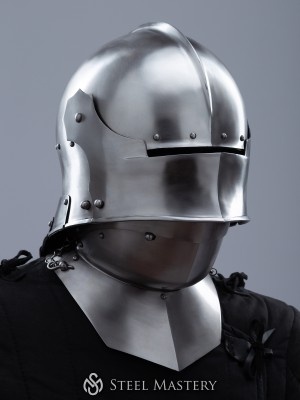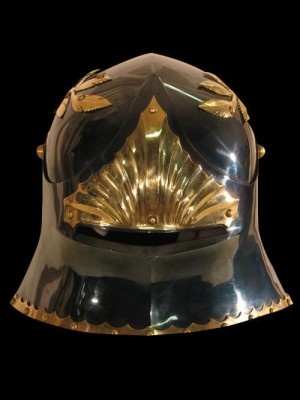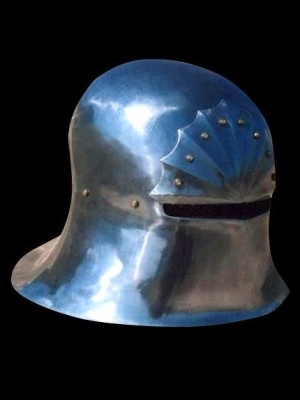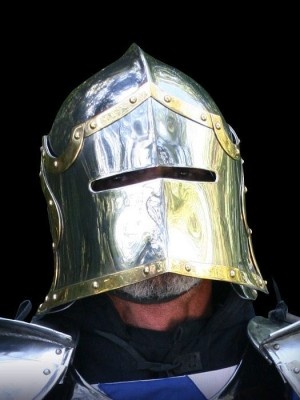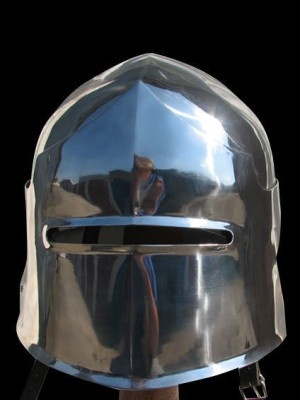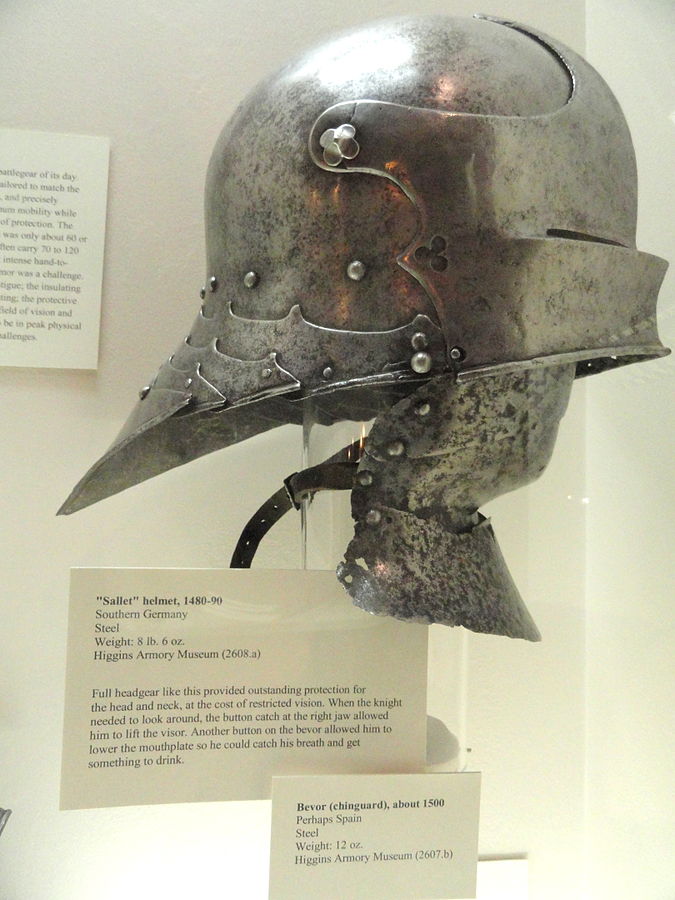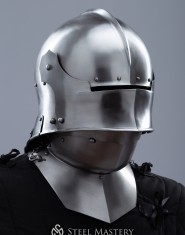Riguardo Sallet helmets
Sallet helmet is basic one from mid-XVth century Northern Europe, especially Germany and Hungary, that replaced bascinet.
Sallet originated at the very beginning of XVth century in Italy as visor- and aventailless bascinet. To preserve protective properties of helmet at its maximum, sides of this mutant bascinet were moved forward and down covering cheeks and chin while the posterior part was elongated while bent out covering neck.
From Italy sallet helmet spread to France, England, as well as the Netherlands and later came to Germany.
From mid- XVth century, sallet types began to vary significantly.
* Starting from 1460, late Italian sallet helmet has appeared – light open-faced helmet with curved sides plus excellent visibility. It was a perfect choice for lightly armed troops, archers, crossbowmen – like Archer Sallet or Italian crossbowman sallet.
To increase face protection, wide plate at the brow of the helmet and deep visors appear, often bellows-typed (with a lot of ventilation holes).
* In mid-XVth century, a specific german sallet was born – round-skulled, long-tailed, often with a few lames. Towards the end of XVth century length of helmet’s tail became more pronounced.
German sallet helmet protects face by two variants:
- elongated helmet front covering eyes and nose with narrow eye-slits,
- movable half-visor with a characteristic protrusion under eye-slits in its lower part.
* English-Burgundian sallet evolved in mid XVth in England and the Netherlands. It was usually worn with a bevor and face protection like German sallet. Actually, it looks almost like German one, only more artsy while less tailed. French sallets look exactly the same. Look at Blued winged sallet with eagle head or Visored french sallet with bevor.
* By the end of XVth century helmet fit to skull tighter and tighter, tail almost disappeared and, by the beginning of XVIth century, sallet became almost indistinguishable from closed helmets. By the mid-XVIth century, it was completely supplanted by closed helm and burgonet.
Combination of sallet with Barbute helmets gave rise to burgonet helmets by the end of XVIth century.
Bevors as well as gorgets were an integral part of sallets protecting lower jaw, throat, and neck.
Mail collar – standard (pizaine) – were also popular among archers due to being cheap, comfortable plus well-protective.
Interesting fact – sallet was a model for German Stahlhelm in World War I, modern combat helmet, and firefighter's helmet.
So, when you, at last, decide to order your personal medieval sallet helmet, be sure – our craftsmen are the best blacksmiths you can choose. They are forging armor for over 15 years, how can you pass this by?
The most metal, the most sparkling, the most armor! Here they are – armors from Steel Mastery.
Choose the one you like or tell us what exclusive you want via email [email protected]. We will forge it specially for you according to your sizes and wishes.
Sallet in the Venetian Style, 1460, The Metropolitan Museum of Art
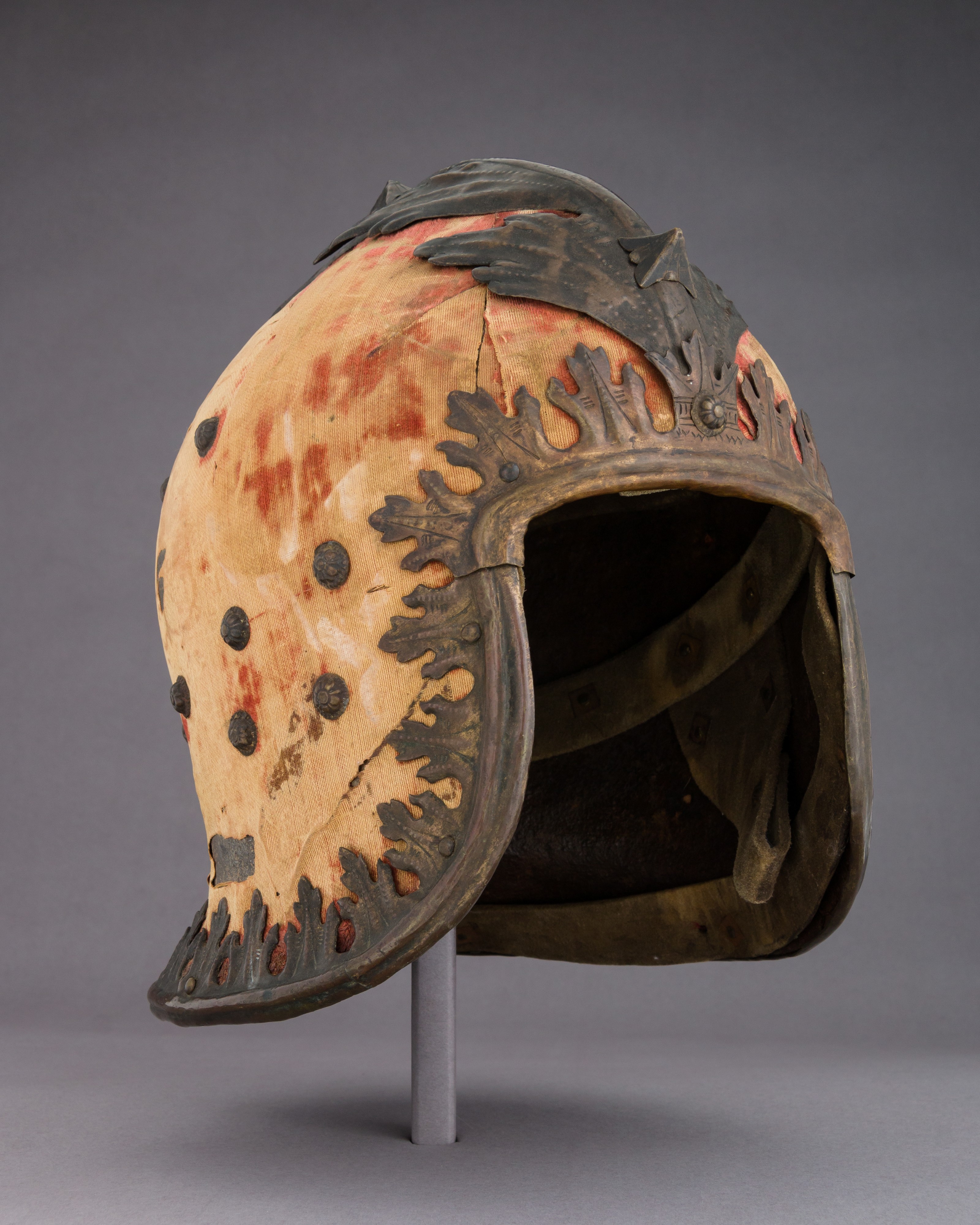
Sallet helmet, Southern Germany, late XVth century, Higgins Armory Museum
Sallet combination of Emperor Maximilian I, 1495, Neue Burg, Collection of Arms and Armour - transitional to the close helm.
